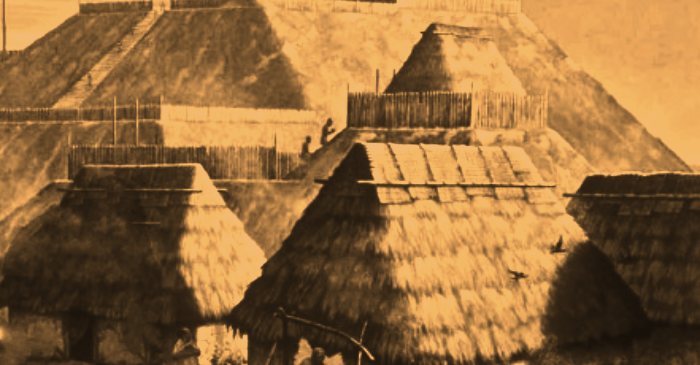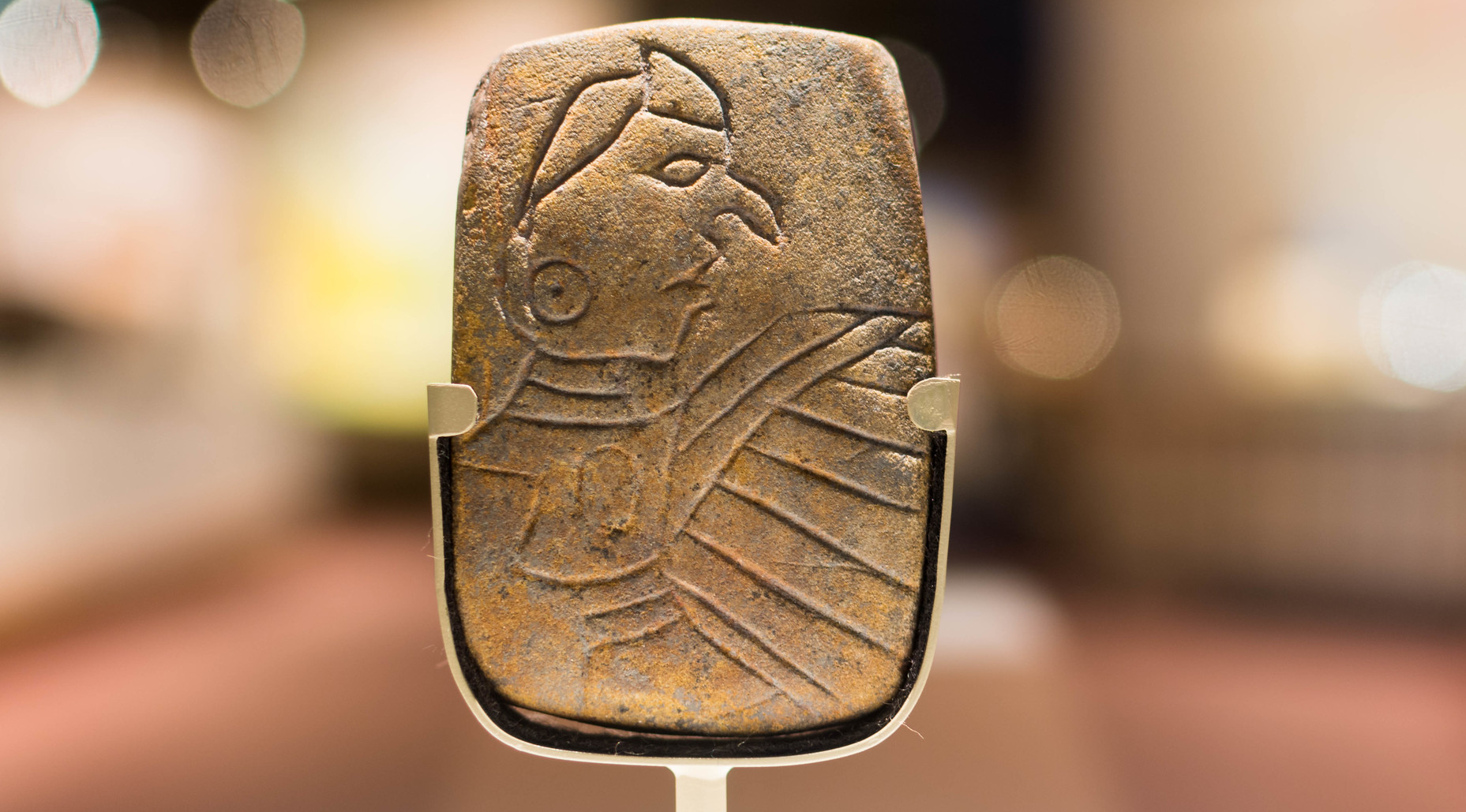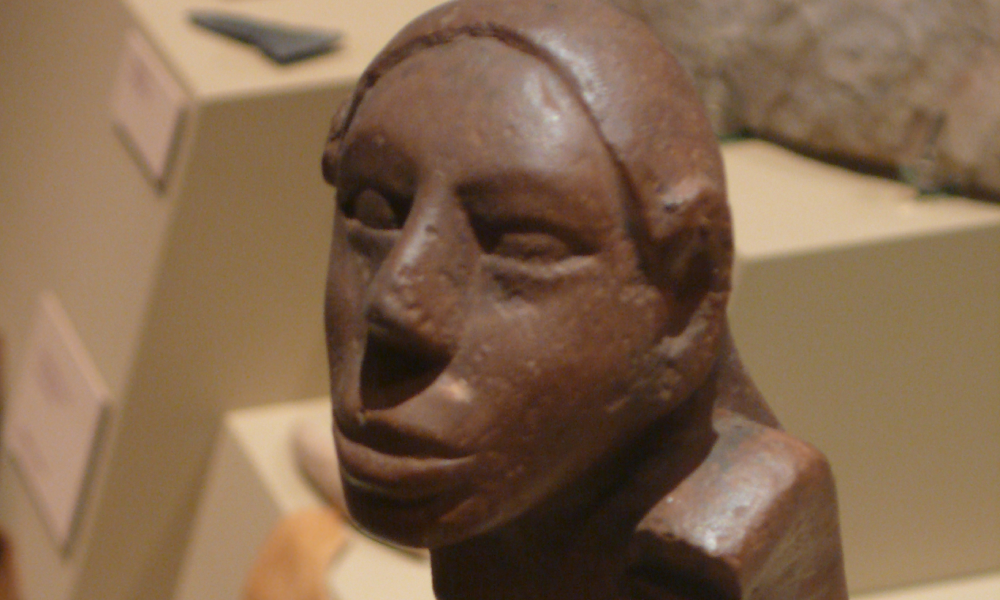What Happened At Cahokia?
Cahokia was once one of the greatest cities in the Americas. But by the 1400s, the city had been abandoned, leaving unending questions for modern archaeologists. Who were the people who called this city home? And what led to its fall? Join us as we uncover secrets from the lost city of Cahokia.

Where Is It Located?
Cahokia was located near present-day St Louis, Missouri, on the east bank of the Mississippi River. At its peak, the city covered approximately six square miles. It was the largest and most influential urban settlement of the Mississippian culture.
 The U.S. National Archives, Picryl
The U.S. National Archives, Picryl
Population
At its height, Cahokia was home to an estimated 15,000 to 20,000 people. This made it the largest city in pre-Columbian North America north of Mexico. The city's population density was higher than many contemporary European cities.
![]() Herb Roe, CC BY-SA 4.0, Wikimedia Commons
Herb Roe, CC BY-SA 4.0, Wikimedia Commons
Monks Mound
Monks Mound is the largest prehistoric earthen mound in the Americas, standing at about 100 feet tall. It covers over 14 acres at its base and is believed to have been the political and religious center of Cahokia.
 Thank You (24 Millions ) views, CC BY 2.0, Wikimedia Commons
Thank You (24 Millions ) views, CC BY 2.0, Wikimedia Commons
The Grand Plaza
The Grand Plaza was located to the south of Monks Mound and was a large area that encompassed about 50 acres, and measured about 1,600 ft long and 900 ft wide. The Grand Plaza was used for public gatherings, ceremonies, and sporting events. Archaeological evidence suggests the plaza was meticulously designed and maintained.
![]() Herb Roe, CC BY-SA 4.0, Wikimedia Commons
Herb Roe, CC BY-SA 4.0, Wikimedia Commons
The Woodhenges
Excavations have recovered five large timber circles known as Woodhenges. It seems that these were used as solar calendars to track seasonal events. They may also have had some sort of ceremonial purpose. The largest of these circles, called Woodhenge III by archaeologists, was about 410 feet in diameter.
Mound 72
Mound 72 is a large burial mound that contained about 270 bodies. One of those bodies is thought to have belonged to a man of high status—buried on a bed of 10,000 marine shells and positioned in the shape of a falcon, archaeologists have dubbed him “Birdman”.
It seems that in addition to being surrounded by many elaborate grave goods, the other bodies in the mound were human sacrifices—worse yet, there’s even evidence that some were buried alive and tried to dig themselves out of the mass grave.
Cahokia’s Social Hierarchy
Archaeologists believe that there was a clear hierarchy in Cahokian society. Evidence from burial sites shows differences in grave goods and treatment of the departed, which indicates that they occupied varying social statuses in life. The elite class likely controlled religious, political, and economic power.
 isghoul, USA, CC BY 2.0, Wikimedia Commons
isghoul, USA, CC BY 2.0, Wikimedia Commons
Political Structure
The political structure of Cahokia probably included a powerful ruling elite supported by a complex administrative system. Leaders were probably chosen from elite families and they probably had both political and religious authority. The organization and coordination required for city planning and construction indicate a highly centralized form of governance.
Cahokian Families
Kinship and family were central to Cahokian society, with extended families likely living together in large households. These family units formed the basic social and economic units of the city. Kinship ties would have also influenced social structure and political alliances.
Their Houses
The people of Cahokia lived in wooden structures with thatched roofs. These houses were built in rows along planned streets. Archaeological evidence suggests that homes were periodically rebuilt, indicating long-term occupation.
 Michael Hampshire, CC BY-SA 4.0, Wikimedia Commons
Michael Hampshire, CC BY-SA 4.0, Wikimedia Commons
The Cahokian Diet
The diet of Cahokia’s residents was diverse, including maize, beans, squash, fish, and wild game. Archaeological findings of plant and animal remains have provided insights into their dietary habits, and it’s believed that food preparation and consumption were central to social and ceremonial life in Cahokia.
Cahokian Gender Roles
We’re still not sure about the details of gender roles in Cahokia, but from burial practices, it seems like both men and women could hold significant status in the city. Women probably played important roles in agriculture, craft production, and possibly in the social and religious spheres.
 Paul Sableman, CC BY 2.0, Wikimedia Commons
Paul Sableman, CC BY 2.0, Wikimedia Commons
Education In Cahokia
Education in Cahokia was likely informal, with knowledge passed down through generations orally and through practice. Skills in agriculture, crafting, and ceremonial traditions would have been taught within families and communities. The use of symbols in art suggests a sophisticated system of knowledge and communication.
Agriculture In Cahokia
The economy of Cahokia was heavily based on agriculture, particularly the cultivation of maize. This agricultural base supported the large population of the city. They also grew beans and squash.
Their Economy
Besides agriculture, the economy of Cahokia included craft production, trade, and possibly tribute from surrounding regions. Artisans produced a variety of goods, including pottery, shell ornaments, and stone tools. Trade brought in materials like copper and mica, not found locally.
Trade Networks
Cahokia was a major trade hub, connected to extensive trade networks that spanned much of North America. Artifacts from Cahokia have been found as far away as the Great Lakes, the Gulf Coast, and the Appalachian Mountains.
 NOAA Great Lakes Environmental Research Laboratory, Flickr
NOAA Great Lakes Environmental Research Laboratory, Flickr
Art In Cahokia
Artistic expression in Cahokia is evident in the intricate designs on pottery, copper plates, and shell ornaments. These artifacts often feature motifs of animals, mythological creatures, and celestial symbols.
Religion
Religion played a central role in Cahokian society, with the city center serving as a major religious center. The construction of mounds and Woodhenges suggests a complex belief system involving astronomy and the natural world. Religious leaders likely held significant power and influence.
Animal Symbolism
Animal symbolism was important in Cahokian art and religious practices. Animals such as birds, serpents, and felines were common motifs.
Astronomy In Cahokia
Astronomy played a significant role in Cahokian society, as evidenced by the Woodhenges. These structures helped mark solstices and equinoxes, guiding agricultural and ceremonial activities. The alignment of mounds and other structures suggests a deep understanding of celestial patterns.
 hakkun, CC BY-SA 3.0, Wikimedia Commons
hakkun, CC BY-SA 3.0, Wikimedia Commons
Seasonal Festivals
Seasonal festivals and ceremonies were probably an important part of Cahokian life. These events were likely tied to agricultural cycles and celestial events.
 Herb Roe, CC BY-SA 3.0, Wikimedia Commons
Herb Roe, CC BY-SA 3.0, Wikimedia Commons
Human Sacrifice In Cahokia
Evidence of human sacrifice has been found at Cahokia, particularly in elite burials like Mound 72. These sacrifices were likely part of religious or political ceremonies.
 Carptrash, CC BY-SA 3.0, Wikimedia Commons
Carptrash, CC BY-SA 3.0, Wikimedia Commons
Cahokia’s Defenses
Cahokia was surrounded by a large wooden palisade with guard towers, indicating concerns about security and defense. This palisade was rebuilt several times, suggesting periodic threats or conflicts. The presence of such structures points to organized and coordinated community efforts.
Mound Construction
Mound construction at Cahokia required moving vast quantities of earth, often transported in baskets by hand. These mounds served as platforms for buildings, burial sites, and ceremonial sites.
Urban Planning
Cahokia was a highly planned city with a sophisticated layout. It featured a grid-like pattern of streets, neighborhoods, and public spaces. There were also many farming villages that surrounded and supplied the city center.
 Herb Roe, CC BY-SA 4.0, Wikimedia Commons
Herb Roe, CC BY-SA 4.0, Wikimedia Commons
Construction In Cahokia
The construction of Cahokia’s mounds, plazas, and other public works required a large, organized labor force. These projects demonstrate sophisticated engineering and social organization. The scale of construction reflects the city’s complexity and the leadership’s ability to mobilize resources.
Environmental Impact
The construction of Cahokia had significant environmental impacts, including deforestation and soil erosion. The large population would have required substantial resources, leading to habitat changes and resource depletion. These environmental pressures may have contributed to the city’s decline.
 W. R. Brink & Co., Wikimedia Commons
W. R. Brink & Co., Wikimedia Commons
Climate And Geography
The location of Cahokia in the Mississippi River floodplain provided fertile soil and abundant water resources. The climate was conducive to agriculture, supporting the large population. However, the area was also prone to flooding, which could have posed challenges or been a factor in the decline of the city.
 George B. Higgins, Wikimedia Commons
George B. Higgins, Wikimedia Commons
The Decline Of Cahokia
Cahokia began to decline around 1300 AD, and by 1400 AD, it was largely abandoned. Historians still debate over the reasons for its decline, with theories including environmental degradation, resource depletion, social unrest, and climate change. However, the exact cause remains a mystery.
Discovery
Cahokia was first documented by European settlers in the 17th century, but it wasn’t until the 19th and 20th centuries that extensive archaeological excavations began. These excavations have revealed much about the city’s history and structure, and Cahokia is now a UNESCO World Heritage Site.
 The U.S. National Archives, Picryl
The U.S. National Archives, Picryl
Water Management In Cahokia
Water management was crucial for Cahokia, given its location in a floodplain. The people built ditches and embankments to control water flow and reduce the risk of flooding. These systems highlight their engineering skills and understanding of their environment.
 Chris Light, CC BY-SA 3.0, Wikimedia Commons
Chris Light, CC BY-SA 3.0, Wikimedia Commons
Regional Influence
Cahokia’s influence extended far beyond its immediate region. It is thought to have been a cultural and economic center, influencing neighboring communities. Artifacts found in distant locations suggest Cahokia’s cultural reach.
Cahokia’s Influence On Modern Archaeology
Cahokia has had a significant impact on modern archaeology, particularly in the study of ancient Indigenous societies in North America. The discoveries from the site have challenged previous assumptions about the capabilities of prehistoric Native American societies.
Learning More About Cahokia
Cahokia Mounds State Historic Site offers educational programs and tours to teach the public about its history and significance. These programs aim to raise awareness and appreciation for Native American history. They also provide valuable resources for researchers and educators.
The Legacy Of Cahokia
Research at Cahokia continues to this day, with new discoveries always emerging. Advances in technology, such as ground-penetrating radar, have allowed for more detailed exploration without extensive excavation. Hopefully, ongoing studies of Cahokia will help uncover more secrets from this incredible ancient city.


























